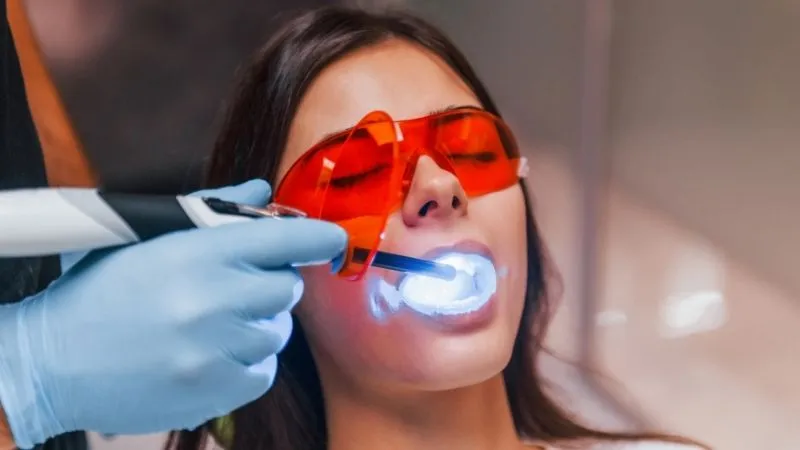
The lifetime of composite bonding process varies between 5 and 7 years on average but may be longer or shorter. In order to better understand the service life of composite bonding process, it is first necessary to get to know it a little.

What is composite veneer?
Composite is similar to the structure of a tooth filling. It is not a solid piece produced according to tooth size like veneers. Just like the tooth filling, the composite is applied to the upper surface of the tooth. Then it is allowed to freeze with the help of light. During this application, the dentist can make slight changes in the shape of the tooth. He can repair broken, cracked parts of the teeth. It can compensate for yellowing that does not pass with whitening.
Since composite bonding is not as hard and strong as veneers, it cannot withstand pressure sufficiently. It easily absorbs colourants due to its porous structure. For these reasons, composite bonding is not suitable for use for many years. It needs maintenance and repair or replacement.
Regularly perform the daily dental care routine, the golden rule of all dental care.
Avoid biting hard objects; composites are not resistant to high pressure.
Composite bondings are susceptible to discolouration. Therefore, limit tea, red wine and coloured drinks.
Avoid acidic drinks to prevent erosion of the composite bonding.
Have a professional cleaning every 6 months. The dental hygienist will remove plaque and polish the composite bonding.
If you have teeth grinding and clenching problems, composite bonding may not be a good choice for you.
If you fulfil these recommendations, the life of your composite veneers will be prolonged.
Composite bondings are suitable for repair and replacement. You can have your composite bondings that are broken or damaged over time corrected during your dentist controls. This feature of composite bondings provides a great advantage. However, composite bondings should generally be replaced or removed after 10 years, even if they are cared for very carefully and regular dental checks are performed.
Yes, composite bondings can be easily replaced. It is a great feature for people who care about reversibility in teeth. Visit your dentist when you are not satisfied with your composite bonding procedure or when it wears out. The dentist can remove them with a special technique.
Veneers cannot be reversed, but composite bonding can be reversed. But how?
The key word is tooth reduction. In other words, the teeth must be shaved before the veneer procedure. This means that a small amount of tooth enamel is removed. Natural teeth can no longer be used as they cause sensitivity, pain and decay problems. For this reason, the veneer is necessarily re-coated.
In the composite bonding process, no shaving is performed. Therefore, it is easy to return to natural teeth.
After 5 years, colour changes, minor cracks and fractures begin to occur in composite veneers due to use. If this situation is at a level that can be repaired, the dentist performs polishing and repairing. If there is an advanced deterioration, it may be better to renew it. This depends entirely on the patient's dental care.
After 10 years, composite bonding generally completes its life. Its colour has changed; cracks and fractures are likely to occur. Small chips and roughnesses are formed on it. If 10 years have passed since your composite veneers, you should contact your dentist to have them repaired or renewed. Or, as a second possibility, you can choose long-lasting porcelain veneers.
If you want to renew your teeth at an affordable price and do not want to have any reduction in your teeth, it may be a suitable method for you. Composite bonding is suitable for patients with minimal tooth alignment problems. Deformations that may occur over time can be easily repaired. Treatment time is short, completed in one visit.
The most obvious disadvantage is the short service life. It can also easily become dull and yellow. It is more difficult to achieve a natural appearance than veneer treatments.
After evaluating the aforementioned pros and cons, you can choose the treatment that suits you by consulting your dentist.
Content